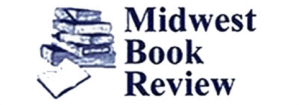Book
About the book
As violence in the United States seems to become increasingly more commonplace, the question of how communities reset after unprecedented violence also grows in significance. After the Bloodbath examines this quandary, producing insights linking rampage shootings and communal responses in the United States. Diamond, who was a leading attorney in the community where the Sandy Hook Elementary School tragedy occurred, focuses on three well-known shootings and a fourth shooting that occurred on the Red Lake Indian Reservation in Minnesota.
The book looks to the roots of Indigenous approaches to crime, identifying an institutional weakness in the Anglo judicial model, and explores adapting Indigenous practices that contribute to healing following heinous criminal behavior. Emerging from the history of Indigenous dispute resolution is a spotlight turned on to restorative justice, a subject no author has discussed to date in the context of mass shootings. Diamond ultimately leads the reader to a positive road forward focusing on insightful steps people can take after a rampage shooting to help their wounded communities heal.
Editorial Reviews
“With the increasing futility represented by politicians who can only seem to offer impotent ‘thoughts and prayers’ to the families and communities victimized by these increasingly frequent mass killings that utilize military style weaponry to inflict as many casualties as possible in as little time as possible, “After the Bloodbath: Is Healing Possible in the Wake of Rampage Shootings?” is a much needed and clarion call to a proper understanding what is going on and what can (and should) be done about it. Exceptionally well written, organized and presented, “After the Bloodbath” is unreservedly recommended for both community and academic library Contemporary Social Issues collections, as well as the personal reading lists of social activists, governmental policy makers, and non-specialist general readers with an interest in the subject.”
—Midwest Book Review, Volume 29, Number 11 November 2019

“Mass shootings occur with such great frequency, we don’t stop to think about the far-reaching pain endured. James Diamond looks at mass shootings and probes how victims, survivors and communities move on after massacres long after the journalists have. Diamond’s insight is stunning and now seems so obvious, that the change historically in how murder cases are resolved, away from a community- and family-centered process deprived people of the human interaction they need to heal. By studying a recent school shooting on a Native American reservation, and the tribe’s refusal to turn its back on the family of the shooter, comes the obvious conclusion that we are all connected and that only together can people navigate the physical and mental anguish from unthinkable human carnage. I covered the Newtown tragedy for “CBS This Morning,” and Diamond asks if Nancy Lanza should have been treated as a murder victim or as an accomplice to mass murder. Diamond stakes out a compelling case that she was a victim. Even if life is a tiny bit easier for even one grieving parent, one survivor, trying to make sense out of the senseless, AFTER THE BLOODBATH will make a world of a difference. We know, sadly, there will be more tragedies; Diamond’s ideas for possible new approaches for communities, for victims and for society are thought-provoking and invaluable.”
—Lee Woodruff, journalist and New York Timesbest-selling author.
“AFTER THE BLOODBATH is an important and most timely book on a devastating subject that produces not only hope out of despair, but a new approach to healing for those communities that have experienced the trauma of multiple-victim rampage shootings. Diamond finds this approach in the traditions of American Indian tribal communities and their unique responses to mass shootings in their tight-knit and oftentimes-impoverished communities. With sensitivity and insight gained from his unique experiences working as a trusted advisor for grieving families in the aftermath of the Newtown murders, we are shown how an indigenous vision of restorative justice at work in American Indian communities can help all of us begin the difficult process of healing and forgiveness in even the most tragic situations we might have to confront in our lives.”
—Robert A. Williams Jr., Regents’ Professor, E. Thomas Sullivan Professor of Law, and Faculty Co-chair, Indigenous Peoples Law and Policy Program, University of Arizona



